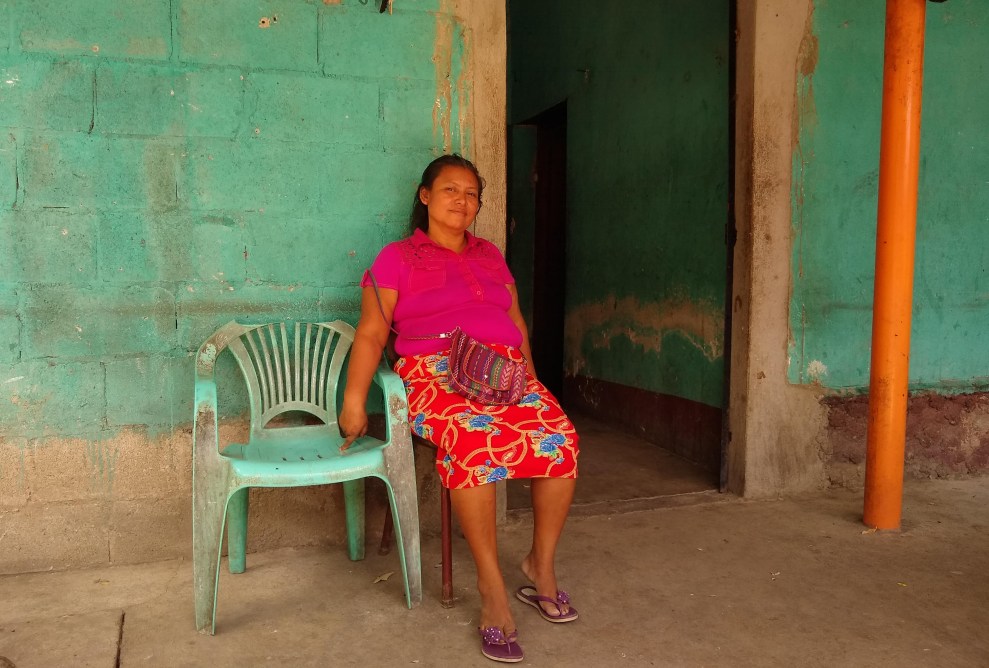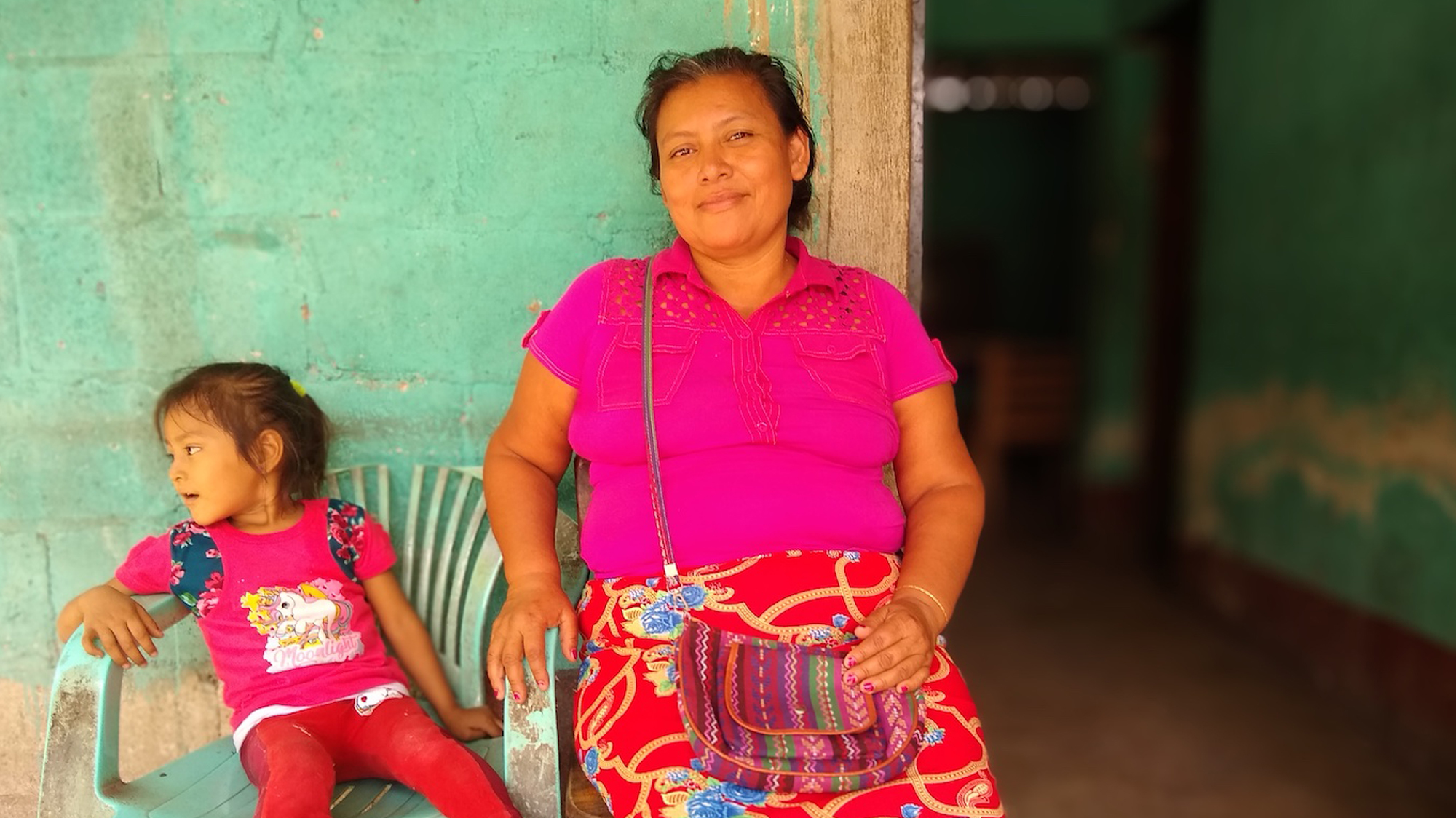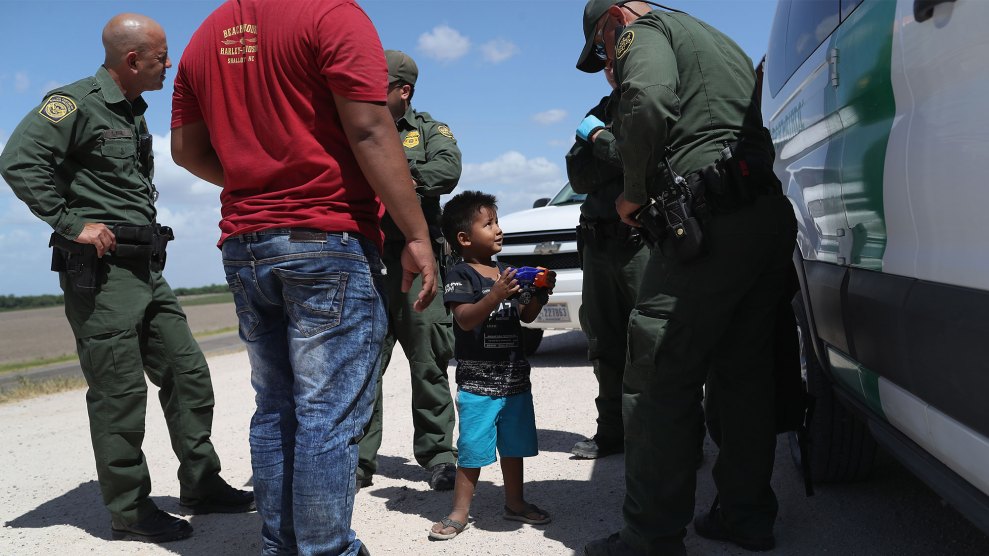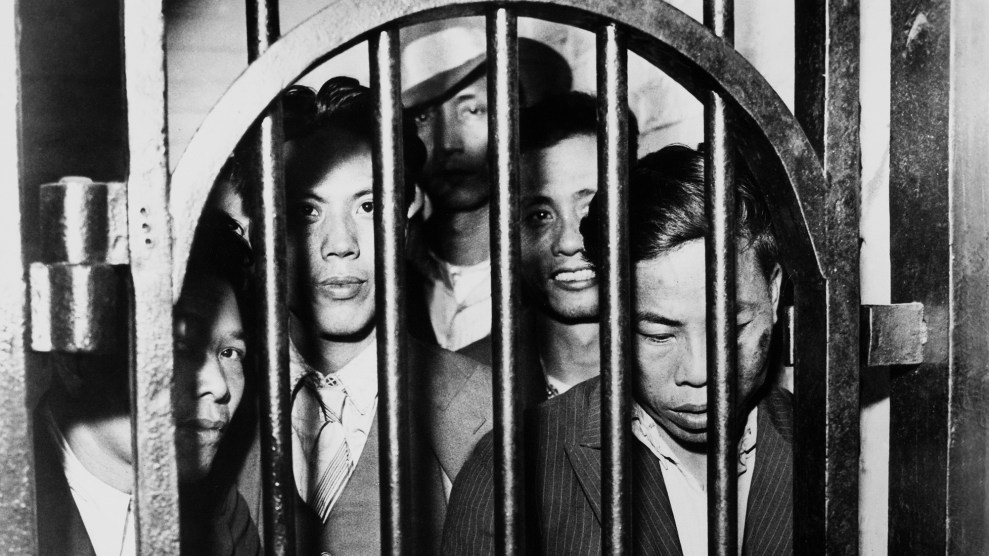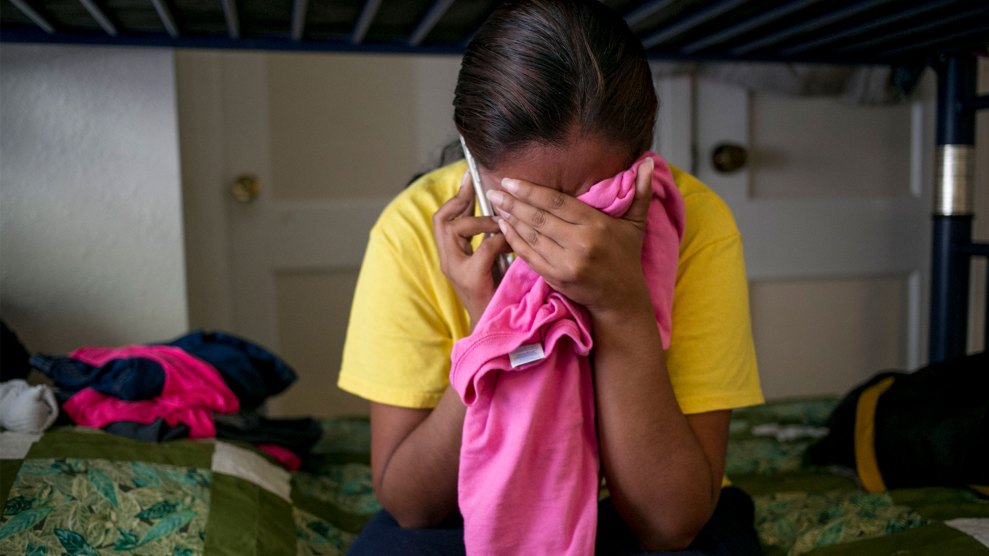In the summer of 2019, Magdalena Hernández Pérez and I were outside her home on the edge of Cubulco, a small city four hours north of Guatemala City. As her grandkids played on the patio, Hernández, looking burdened beyond her 39 years, sat on a teal chair that matched the wall behind her. “Why didn’t they respect my rights?” she asked in Spanish, her voice shaking, her cries evoking the distinct guttural sounds I’d heard as my grandmother’s children stood over her casket.
The “they” Hernández was referring to were US border officials. Two years before we met, in December 2017, they put her in a frigid holding area at a detention center with her two youngest daughters, Mariana, who was 9 years old at the time, and Julieta, who was 16. (Their names are pseudonyms.) A week later, the family was transferred to a room at a second detention facility. The next afternoon, a border official called Hernández’s name and she raised her hand. Three officials then took her outside the room she’d been in with her daughters. A female guard shackled Hernández by the legs and hands as Julieta and Mariana looked on. When Hernández asked why she was being shackled, one of the officials said that if she resisted, she’d be treated “like she should be treated.”
Mariana cried and screamed, demanding that her mom be let go; border officials still took Hernández away. “It’s never left my mind,” Julieta said about that moment. “It was a horribly traumatic because I never thought I’d see my mom like that.” The two girls began to feel better after two officials reassured them that it was only a matter of time before they were going to be taken to join their mother. “They tricked us,” Julieta said. They ended up at a shelter in California with no idea where their mother was.
They haven’t seen her since. After being pulled away from her daughters, Hernández was led to a bus that transferred her to an Immigration and Customs Enforcement detention center in Arizona, about two hours north of the border. Along the way, she couldn’t stop wondering where her daughters were: How were they? Who was taking care of them now that she couldn’t? During parts of the ride, she wanted to die. During others, she felt like she’d already been killed.
For the next month or so Hernández had no idea where her kids were, despite her pleas for information from immigration officials. In February 2018, after two months of detention in Arizona, ICE deported Hernández. She left the United States by herself. When she got off the plane in Guatemala City, she still hadn’t been able to talk her daughters. “I returned to my country destroyed,” Hernández said.
Hernández’s family is one of thousands that was separated during the Trump administration. Many have been reunited in response to a class-action lawsuit brought by the American Civil Liberties Union in 2018. But Lee Gelernt, the ACLU’s lead attorney in that lawsuit, said there are more than a thousand parents like Hernández who were deported without their kids and have yet to be reunited. And yet, even within that group, Hernández’s situation is unusual. Separated children whose parents were deported alone were usually released from government shelters to live with relatives or family friends who were already in the United States. Ending up as Mariana and Julieta did, was rare.
In that first conversation, when I asked Hernández where Mariana and Julieta were now, she took out her phone and pulled up a photo. It showed Mariana looking happy on a California beach next to a few other Latin American children. She was living with foster parents in what had become her new family. Photos like this one and phone calls were the only threads that kept Hernández present in Mariana’s life. Hernández had more contact with Julieta, who’d left the foster family she and Mariana were placed with when she turned 18, joining relatives in Tennessee. She too lost touch with her sister. The Hernández family that arrived at the border together was split between two coasts and two countries.
Now, as the Biden administration has made family reunification a priority, they finally have some hope of being reunited—although what that will look and when it will happen remains to be seen. In early February, it created a task force to figure out how to reunify separated families to “the greatest extent possible.” Soon after, the administration announced that Michelle Brané, a highly respected advocate for migrant women and children, would serve as the task force’s executive director. The group’s initial report and recommendations are due by June. For parents like Hernández, they will be long months. And even with seamless logistics, no government action will undo the years of trauma that parents and children have now endured.
“This case perfectly exemplifies all of the trauma and the pain and the years of recovery that family separation is going to cause,” said Lindsay Toczylowski, the executive director of Immigrant Defenders Law Center, a Los Angeles nonprofit that has represented Julieta and Mariana. “It’s a microcosm of what happened to hundreds and thousands of people.” Toczylowski stressed that people like Hernández absolutely should be allowed to return to the United States for the opportunity to reunite with their kids.
Making matters all the more frustrating is that Hernández still does not have a clear explanation for why her children were separated from her. What she does know is that if immigration agents had dropped her and her daughters off at a shelter three years ago, the family would be together right now. “For the past three years, it’s felt like they killed me,” she said. “Because I haven’t been able to be close to my little girl.”
“I want to see Mariana because she’s the youngest,” Hernández said. “I want to be with her and hug her and tell her how much I love her.” She prays to God that, one day, there will be justice.
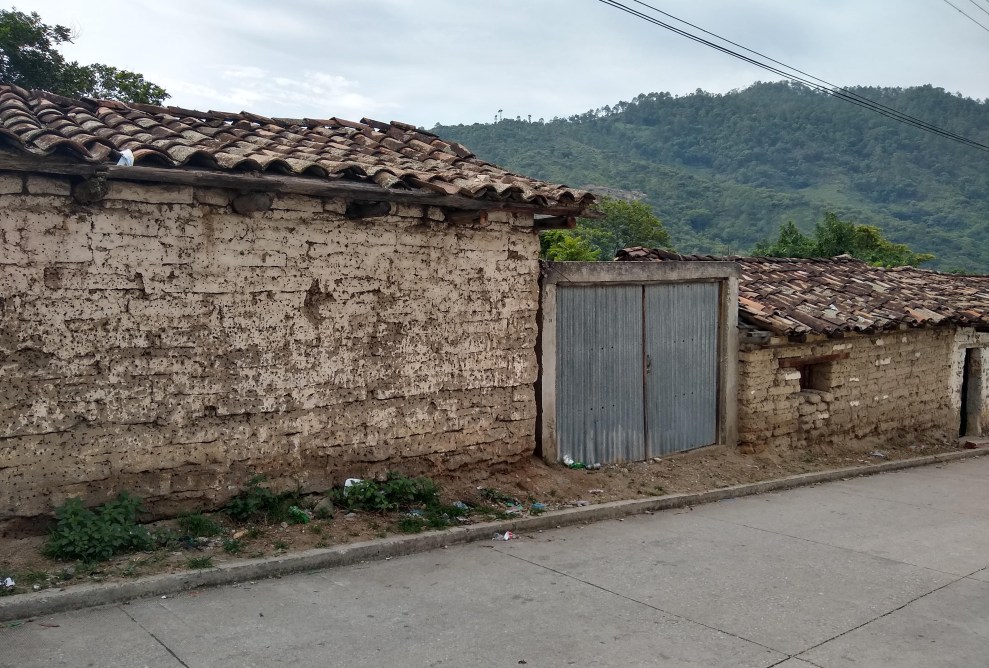

Migration stories are often told as if they happened suddenly—a crop fails, a gang shows up at the door, a cop asks for a bribe. But these narratives obscure the ways in which decisions to leave were far longer in the making. For Hernández, one place to begin would be 1979: the year she was born to parents who farmed and fished along the banks of the Chixoy river. That same year, families in Chicruz, a village along the river about 10 miles north of downtown Cubulco, rejected efforts by Guatemalan government officials to push them off their land to make way for a dam being built, with loans from the World Bank and Inter-American Development Bank. The country’s government, though, refused to halt the project, which eventually would become Guatemala’s largest source of power. By 1982, with the dam near completion, Chicruz residents were forced to abandon their land for higher ground to avoid the flooding the dam would cause. The dislocation left the community isolated and dependent on water contaminated with animal waste. William Partridge, a consultant to the Interamerican Development Bank, concluded in a 1983 report, “By any measure, the resettlement program of the Chixoy Project has been a disaster.”
Eventually, like much of Chicruz’s population, Hernández’s family wound up in a new and shoddily-built settlement on the outskirts of Cubulco called El Naranjo. Some three decades later, Herández was still living there when I arrived in town. I first saw Hernández, in a magenta shirt, a red skirt emblazoned with blue flowers, and purple flip flops, sitting off to the side of a crowded community meeting at a school in El Naranjo. The meeting had been organized to deal with one of the legacies of the dam: Nearly 40 years after being flooded off their land, El Naranjo’s residents still lacked regular access to running water.
I was there to report on how Trump’s border policies had left people trapped in the kind of a town where migration was one of the only ways to escape generational poverty, and I’d heard through a connection that Hernández had once made the trip north. As we talked, we walked across the road to talk on the patio of her home—a cinder block box topped with metal laminate that she shared with her two oldest daughters and their two children. After I turned on the recorder, the three things she initially told me could almost be a synopsis of her case: first, lawyers had told her that her daughters were in the United States; second, she wanted more than anything to be with them; and finally, no guardian could ever be the same as a child’s own mother.

Hernández’s family had first moved to El Naranjo when she was about ten years old. She then started working at 12. With her family, she’d head south to harvest coffee and tomatoes, while others from Cubulco were creating pathways for heading north. After Hernández married a man a few years her senior when she was around 16, she quickly had three daughters, the youngest was Julieta. Like their mom, they had to leave school years early to start working.
About eight years after Hernández’s husband abandoned the family, she had Mariana with a partner who left before their daughter was born. Mariana was the baby, the last person in the family with a chance to get the education that had been inaccessible to everyone else. Hernández became increasingly focused on going to the United States. Julieta, the second youngest who was earning about $3.25 while working 11 hours a day making tortillas, told me her mom started to talk about emigrating after seeing how tired she was when she got home. But it was not just Julieta’s exhaustion that motivated her. Violence had metastasized in the neighborhood, and Hernández said that one of her older daughters had been sexually assaulted. Hernández had testified to help send the perpetrator to jail, and she feared what would happen when he got out. America meant safety, the possibility for an escape from the grinding poverty in which they lived, and a chance for Julieta and Mariana to study.
When Hernández decided to leave in 2017, the number of families fleeing Central America for the US-Mexico border had been steadily increasing. Hernández had heard, accurately, that it was far easier for people to enter the country if they were traveling with minor children. Instead of trying to make it through the desert undetected, those families could turn themselves over to Border Patrol agents. From there, they were usually released into the US to await court dates and asylum hearings. Hernández took out a more than $9,000 loan against her home from a man she knew in El Naranjo so she could pay a smuggler to bring her and two daughters to the border.
Hernández’s plan was to get to the border then join a friend in Tennessee, the main destination for migrants from Cubulco. Once there, she’d be joined by a sister who planned to leave Cubulco just after her. Hernández, along with Julieta and Mariana, left their home around the start of December 2017, and Hernández recalls a roughly two-week ordeal during which they barely slept as they endured days without food and water. Smugglers packed them into cars and trucks with little regard for their welfare. When I asked Julieta about their trip, she explained, “I can simply say they were worst days of mine,” and didn’t want to provide any more details.
Soon before Christmas in 2017, they crossed the border between Sonora and Arizona around midnight as part of what Hernández remembers as a group of about 150 people. Border Patrol agents drove them to the holding pens that Spanish-speaking migrants often call hieleras, or iceboxes. Children are supposed to spend no more than 72 hours in them since the conditions are transparently inhumane, even when compared to ICE detention. Hernández and her daughters were there for about a week. “It’s a place that’s fit only for rats, not people,” Hernández said. At night, they were so cold they couldn’t sleep. Hernández picked up the mylar emergency blankets other migrants left behind so that her daughters would have a minimum of warmth. Her request for water for her daughters to bathe was denied. And with a diet that consisted of cups of instant noodles, Hernández said her diabetes flared up. When her mother asked for medicine, Julieta said, border officials laughed. “What kind of crap did you come to do in this country?” Hernández recalls one border official asking her family. “This is our country. There’s no reason for us to let you in.”
As Julieta put it, “It was like we were nothing to them.”
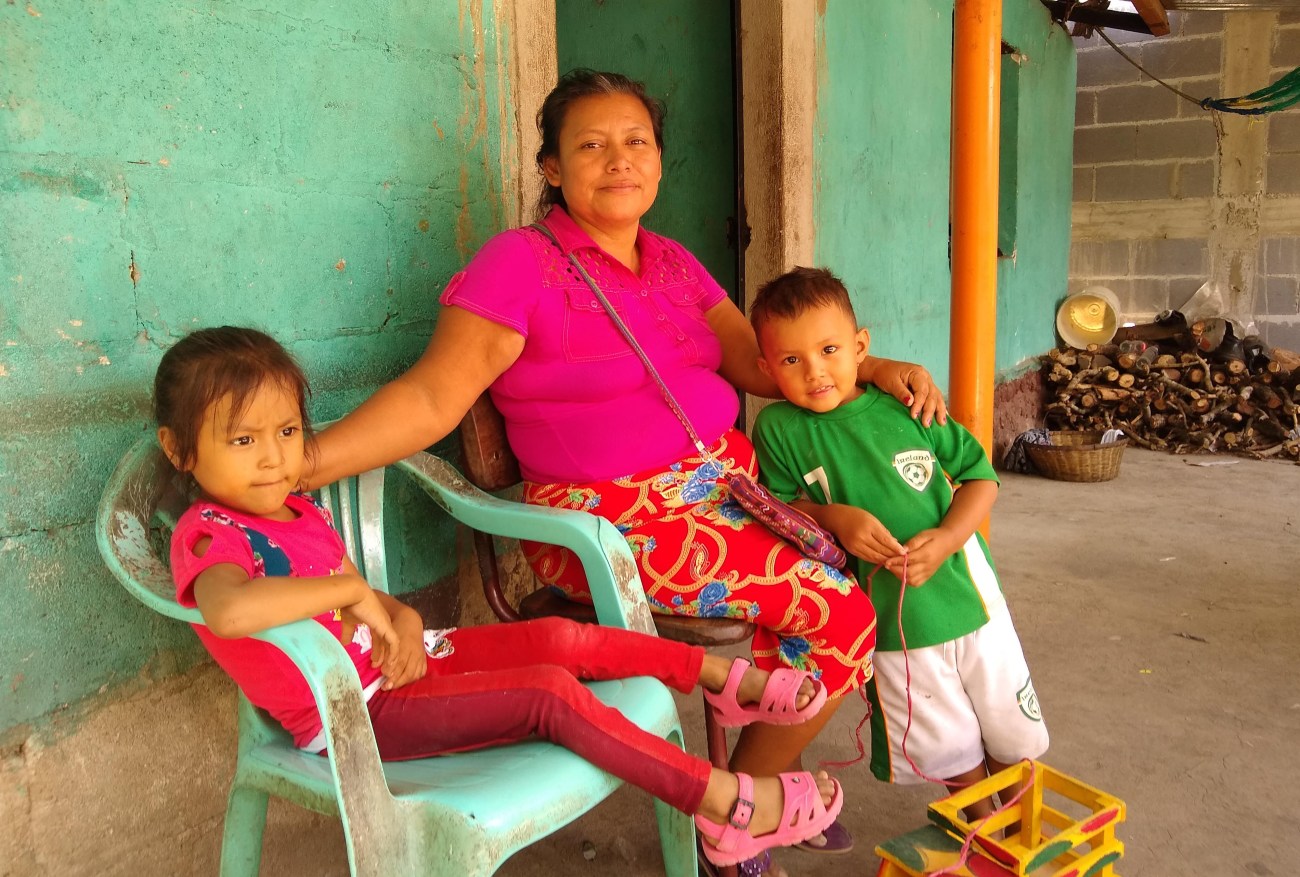
Hernández with her grandchildren.
Noah Lanard / Mother Jones

The family separation policy that came to dominate news in the spring of 2018 did not yet exist when Hernández and her daughters were apprehended. Then, migrant families were usually released together or sent to family detention centers. Though a pilot version of the family separation program that prosecuted parents for entering the country illegally had been attempted in 2017, it had recently ended along a different part of the border. Unlike those separated parents, there is no evidence Hernández was prosecuted for crossing the border without authorization. The reason why they were separated is not even clear. Nor is this unheard of. Gelernt, the ACLU attorney, said it was “par for the course” for the Trump administration to separate families without telling parents why they were losing their kids.
No judges are involved when CBP initially splits up a family. Instead, border officials, who have no expertise in child welfare, decide for themselves whether it is in a minor’s best interest to be sent on their own to government shelters under the authority of the Department of Health and Human Services. In some cases, those decisions may be justified. But in many others, they’re not.
Jennifer Podkul, vice president for policy and advocacy at Kids in Need of Defense, noted, in typical child custody cases, “there’s no way a child would be taken from their parent without a court review and law enforcement involved and evidence.” But for migrant families seeking protection, she added, that decision is made “willy nilly with absolutely no opportunity for review, or anyone with expertise making those decisions.”
In February, I asked a CBP spokesperson why Hernández had been separated from her daughters, but he said he couldn’t provide any information due to “privacy reasons.” I replied that Hernández was willing to sign a privacy waiver. But after checking with a superior, he responded that it made no difference. An ICE spokesperson later said she could provide detailed information if Hernández signed a privacy waiver. After receiving a privacy waiver that had been delivered to Hernández’s home, the ICE spokesperson said that she couldn’t provide any information due to ongoing litigation. Nor could I get more information from the DHS press office under Biden. Instead, an anonymous official sent a link to a press release containing the principles of the family reunification task force.
Toczylowski said that the government records her organization has access to provide no explanation for why border officials separated the family. Cristel Martinez, a LA-based immigration lawyer who represented Mariana and Julieta when she worked for Immigrant Defenders, said she never found a definite reason for the separation. That fits with the fact that CBP was not tracking family separations at the time. In the end, it’s possible that no one in the government has any idea why two daughters have been separated from their mother for more than three years.
For Hernández, the lack of an official explanation has left her with no choice but to try to piece together why she lost daughters based on incomplete information provided to her at the border. She believes the separation stems from logistical challenges that arose while the family was in CBP custody. While they were in the hielera, Hernández said the friend who was going to initially host them there was unable to figure out how to buy their bus tickets. Border officials rejected Hernández’s request to call her older daughters in Guatemala so that she could get the phone number of relatives in Tennessee who could help, Hernández said. She begged for border officials to drop them off at a church so she could connect with her family in Tennessee and make plans for the three of them to go there. “Have some heart,” she pleaded. “I’m a single mother. They’re going to take my kids.”
The idea that CBP separated the family because of the problems with the bus ticket doesn’t add up to people familiar without how the agency operates in Arizona. Alma Bon, an immigrant advocate who worked at the Arizona shelter where Hernández likely would have ended up, said CBP released families in the area all the time without tickets to their next destination. Bon and others at the shelter would then have helped handle the logistics.
Another explanation is that CBP decided Hernández posed a threat to her kids. After the separation, an official told Julieta that her mom had been looking at a bridge as if she was were going to throw herself off it, Hernández said. But Hernández said she never even saw a bridge, let alone contemplated self-harm. Toczylowski said there is no evidence Hernández ever posed a threat to her daughters.
There’s also a more chilling possibility: Like so many other parents, she may have been separated from her kids to send a message to other parents deciding whether to come to the United States. Less than a week before Hernández and her daughters got to the border, immigrant advocacy groups asked the DHS civil rights office and its inspector general to investigate what appeared to be a substantial increase in arbitrary family separations. The Arizona-based Florence Immigrant & Refugee Rights Project had identified 155 family separations by late October 2017, with nearly 60 percent of the separation happening in the previous few months.
After losing her daughters, Hernández was taken to Eloy, an Arizona detention center run by CoreCivic, a private prison giant with a long history of misconduct. At her first court hearing, she asked the judge where her kids were. The judge told her didn’t know because he wasn’t responsible for their cases. About a month after the separation, she contacted a Guatemalan consulate on the advice of a fellow Guatemalan in detention. The consulate quickly figured out that her daughters were at a shelter in California.
The story could have ended there, and the family could have been reunited—if Hernández had been able to post a bond of about $10,000 in immigration court. But Hernández not only lacked the money, she was unable to compile the necessary supporting documents in English that explained why she should be released. In another of the myriad ways that migrants are denied basic due process rights, since there is no right to public defenders in immigration proceedings, Hernández had to navigate her case without a lawyer. For someone with one year of formal education and no knowledge of English, that all but guaranteed deportation.
On January 24, five weeks after she got to the border with her daughters, a judge ordered Hernández deported. To pay for the post-deportation bus trip from Guatemala City to Cubulco, Hernández saved $20 by working in the detention center’s kitchen for $1.25 a day. She still hadn’t been able to speak to Julieta and Mariana by the time she boarded the deportation flight. Her older daughters could hardly believe that their mother returned without their sisters, who were still in the California shelter. The family barely avoided losing their home when the man who’d loaned Hernández the money to get to the border agreed to let them stay. Hernández was so traumatized and depressed by her experience that it would take a year before she felt comfortable going outside.
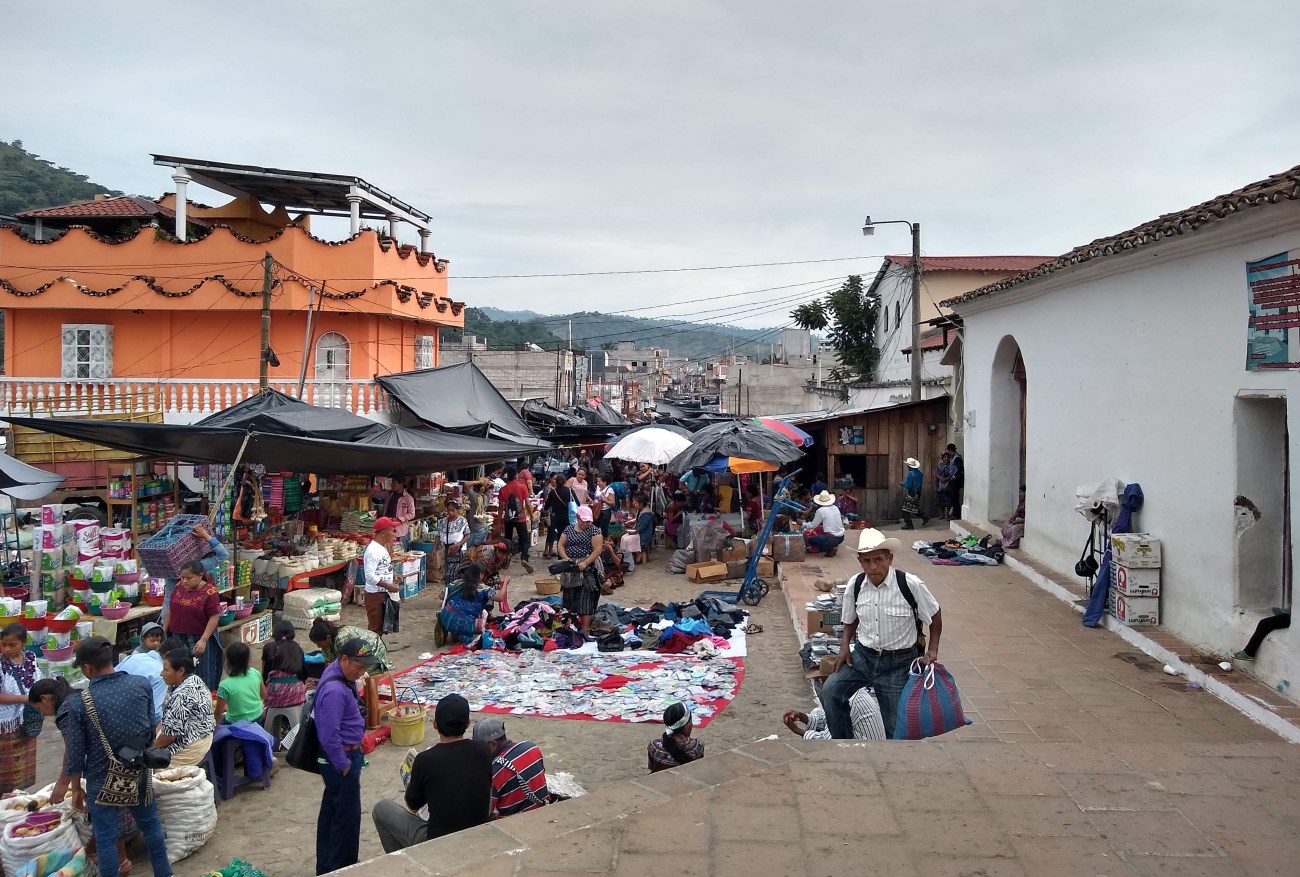

Three months after deporting Hernández, the Trump administration launched its Zero Tolerance policy, in which families were separated when parents were charged with the misdemeanor offense of crossing the border without authorization. In June 2018, the administration abandoned the policy in response to unexpectedly intense public disgust. The next week, a federal judge ruled in the ACLU’s family separation case, known as Ms. L, that the government needed to reunite all separated families whose children remained in government custody. Government officials scrambled to figure just how many families had been separated, and where the parents and children had ended up. Their initial count found more than 2,500 children who could potentially be reunited.
In March 2019, the government acknowledged that it had deported 471 parents without their children. The total would grow to more than 1,000 as the scope of the Ms. L lawsuit expanded. The Trump administration never gave parents the option of coming back. Instead, parents had to choose whether they wanted their kids to remain in the United States or have them return to the countries they’d escaped.
For Hernández, that meant traveling to Guatemala City about a year after she was deported to meet with lawyers working on the family separation lawsuit. After her meeting with the lawyers, Hernández, like most parents, decided that her daughters should stay in the United States. A lawyer said she might be able to return to pursue an asylum claim, which would have involved traveling to the border and presenting herself to border officials at an official port of entry. Hernández chose not to because she never wanted to risk being detained again. She wants to return to the United States without being treated like a criminal.
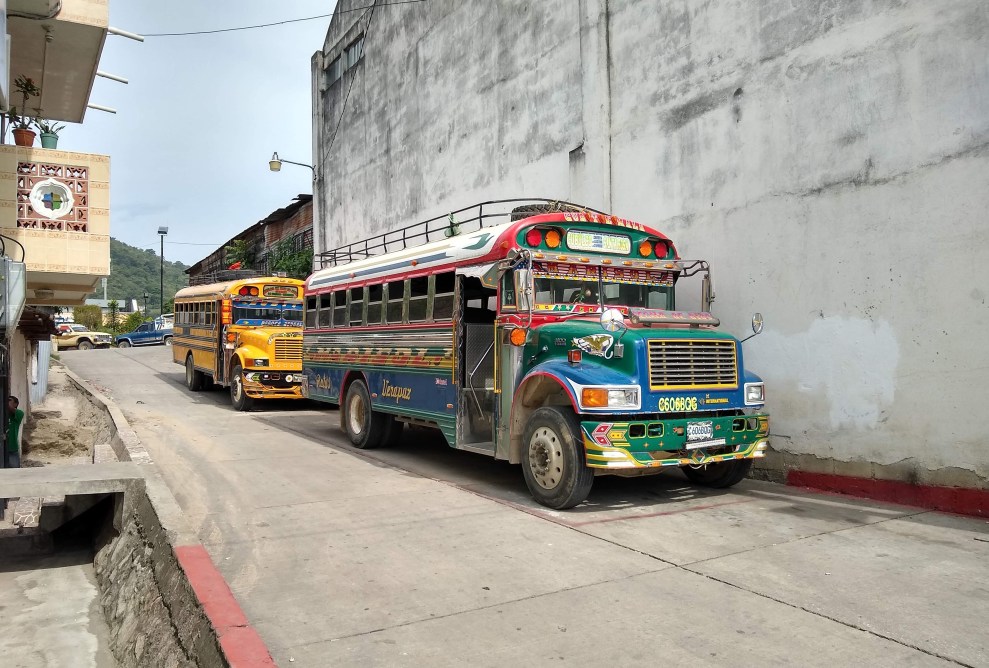

When Hernández showed me the photo of Mariana in 2019, we’d only been talking for about 15 minutes. I knew almost nothing about how she, and Julieta, had ended up near Riverside, California, living with a foster family.
When they arrived, Mariana was the youngest of six foster kids from Mexico and Central America in the house. Julieta, at 17, was the oldest. After having spent years out of school, Julieta was learning English at a Southern California high school. That would have been tough for anyone, but her situation was particularly challenging: Her lawyer at the time had warned her that if she turned 18 before gaining additional legal protections ICE could potentially send her to an adult detention center. She struggled to pay attention as she contemplated the possibility of being detained again.
Home life was a challenge, too. For fun, the kids would watch movies or enjoy the occasional birthday dinner, though Julieta said they mostly stayed inside. Going back and forth between school and the foster home, she felt more confined than she’d been in Guatemala. Julieta struggled with the fact that she couldn’t talk with her foster mom like she could with her own mother. She grew increasingly frustrated by her new life as Mariana became more accustomed to it.
One day before turning 18, Julieta gained protection from ICE by being admitted into Unaccompanied Refugee Minors program, which provides support services to children without parents in the United States who can care for them. She’d also gained Special Immigrant Juvenile Status, a designation that put her on the path to obtaining a green card. Hernández had succeeded in giving her daughter a chance at a safer and more prosperous life, and she’d done so at a far greater cost to herself than she ever imagined.
Now an adult, Julieta decided to leave for Tennessee to be with her aunt and other relatives. Joining them as an adult was a much easier than as a minor, when her undocumented relatives would have needed to come forward to the government at a time when the Trump administration was targeting sponsors for deportation.
In Tennessee, Julieta earns around $11 an hour cleaning offices and stores. She makes nearly as much in a day as she once did in a month. Every month, she sends about $400 back home, which makes it easier for Hernández to watch after her grandkids instead of working. Her mom can call whenever she wants now that Julieta pays for her own phone.
Martinez, the LA-based lawyer who has worked with Mariana and Julieta, isn’t sure the family will ever fully recover. “You talk about three years of separation,” she said. “I don’t know how long it’s going to take to try to make up for that time. Is that possible?” She knows better than most what her former clients might be going through. In 1999, she left Honduras with three relatives to join her mother, who’d come to the United States one year before.
Lisa Pineda, a licensed social worker and psychotherapist at Terra Firma, a New York-based medical-legal partnership that assists immigrant children through advocacy and direct services, has worked with many separated families who’ve been reunited and agrees that no matter what happens, reunification will not resolve the deep traumas inflicted by the separation policy in the first place. She has seen many children who are haunted by feelings of abandonment, even though their parents did nothing wrong. Her colleague Brenda Punsky, a clinical social worker, counseled a five-year-old boy who’d been separated from his mom for about six weeks. When she first started seeing them about two years ago, his mom couldn’t go the bathroom alone without him being triggered and crying. She’d told Punsky several times that he was no longer the same child who had accompanied her to the United States.
Punsky also worked with a mother who was separated from her two boys before being reunited. About two years later, her kids couldn’t eat when their mom went to the hospital because they were afraid they wouldn’t see her again. The reunited families with whom Pineda and Punsky have worked were separated for weeks or months; for parents who were deported alone years ago, the difficulty of restoring severed relationships will be even greater. “I will say that every day that passes by without them being reunited adds to the trauma,” Punsky said. “Every single day.”

Still, Hernández holds out hope. During one of our last conversations in February, she repeated how much she wanted to be living with Julieta and Mariana in Tennessee, just like she’d planned to do in 2017. And now that the Biden administration has embarked on an effort to reunite these families, Hernández may be allowed back into the United States and join Julieta there, with access to free support services as she establishes her new life. According to the reunification task force’s statement of principles, those services would be defined “very broadly, to include transportation, healthcare (including trauma and mental health services), legal services, and career and educational services.”
Bringing Mariana along may be more complicated. Gelernt, the ACLU attorney, said he’s yet to see a situation where a parent and child have ended up disagreeing about reunification. But after more than three years of growing up in the United States, Mariana could ask to remain with the foster family. Then a judge would have to make yet another impossible choice based on what she thinks is in Mariana’s best interest.
But it all may not be as straightforward as that. Mariana has now celebrated three of her 12 birthdays in the United States without her mom; she’s lived the life of an American preteen. She’s been away from Hernández during crucial years of early adolescence during which, psychologists have found, children form their own sense of identity as individuals and stop thinking of themselves as an extension of their parents. But what happens when one’s relationship with a parent, like Mariana’s with Hernández, is violently disrupted during a time when the child is still very much attached? And then, what happens to any relationship with a parent when it’s limited to two 20-minute conversations a week?
For now, with her mom stuck more than two thousand miles away, Mariana has chosen to be with the foster family over joining Julieta in Tennessee. She’s told her mother she has a plan for her future: She will stay in school and become a nurse or a doctor. She framed it as the sacrifice she was making for her mom.
In her sleep, Hernández is often with Mariana again. She imagines that she’s looking at her or combing her hair. She called these simple maternal images nightmares. They are nightmares because they are still only dreams.
